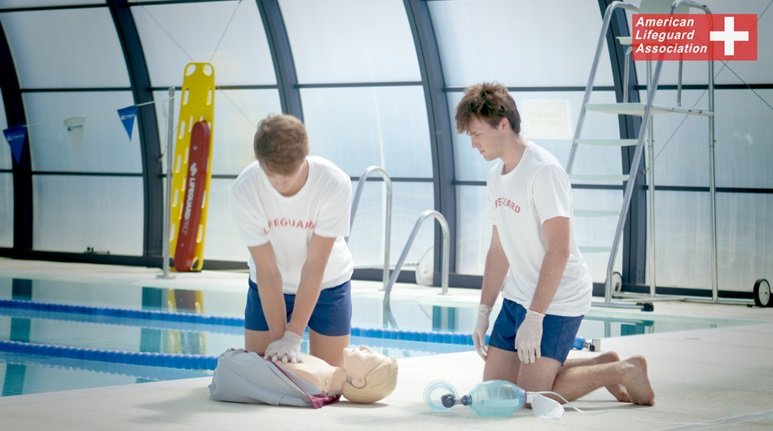So, in the comprehensive choice of the programs for lifeguard training, there exists a wide selection of the offers that meet specific requirements and experience levels. Appreciating these subtle differences may be critical in choosing the appropriate training strategy for intending professional vowed to ensuring safety in and around water bodies.
Basic Lifeguard Training Courses: Setting the Stage
Basic lifeguard training courses structure the bedrock of lifeguard education. These courses regularly envelop fundamental skills, for example, water rescue techniques, cardiopulmonary resuscitation (CPR), and basic first aid. The accentuation is on imparting primary information and reasonable skills essential for anybody wandering into lifeguarding.
In these courses, members are often taught the precautions to take when it comes to water, ways of observing the scene and ways of responding to an occurrence. They also explore such topics as risk analysis, management of communications, and even focus on effective cooperation, which is imperative in making the water area safe.
High level Lifeguard Classes: Competence that arise due to hoisting Mechanism
For those trying to deepen their lifeguarding ability, high level lifeguard classes offer an abundance of particular information. These courses go beyond the basics, covering progressed rescue techniques, emergency oxygen organization, and automated external defibrillator (AED) use, and that’s only the tip of the iceberg.
Current generation lifeguard students may engage in scenario based education, enhancing their expertise in handling of complicated emergencies. They also feature authority skills, performing under pressure, and problem solving, relevant to the senior lifeguard roles.
Specific Lifeguard Certification:
Various aquatic facilities have their distinct complexities that necessitate appropriate lifeguard certification programs. For instance, the lifeguards in water parks might undergo training and certification in operational procedures such as the slide rescue and crowd handling. Similarly , lifeguards at waterfronts should be able at handling water currents, tides, and large aspect rescue operations.
These particularistic demands are addressed by some certification programs which prepare lifeguards with information and skills that are anticipated to attend to environment-related issues. As such, such programs often involve hands-on training in simulation to prepare lifeguards for actual-life situations.
Online Lifeguard Training
With advancement in technology, there has been advancement in the way that lifeguards gain their techniques through online lifeguard training. These programs combine hypothetical lessons with intelligent modules, quizzes and video demonstrations in order for the members to gain knowledge at their own pace and at their own time of choice.
Although online lifeguard training offers all basic theoretical approaches, most of the courses require members to complete face-to-face practical training for certification. This method ensures that students not only master the idea being taught but also how to handle that idea when put into practice.
In-Person Skills Assessment
An equally vital component of remaining licensable now is an in-person skills test whereby up-and-comers demonstrate their capacity in lifeguarding skills. This active assessment confirms the candidate’s fitness to address emergent situations, facilitates rescues, manages first aid, and communicates with subordinates and customers.
State-imparted aptitude assessments are led by authorized educators who evaluate competitors with the objective of conforming to structures prescribed by certifying organizations. A successful completion of these assessments is often a requirement for achieving the lifeguard certification.
Picking the Right Training Program: Conditions and parameters
In leaving on the journey of lifeguard training, some factors deserve consideration in making a suitable program. Such features include the status and recognition of the training provider, scope of the educational curriculum, presence of practical training options, and accordance to commonly embraced lifeguarding requirements.
Thus, looking for the programs, reading the audits and searching the recommendations of other trainers it is necessary to think and research properly in order to make the proper choice. It also helps to define the cost and flexibility of the plan and the near topography of the lifeguard classes near you to make the determination smoother.
American Lifeguard Association (ALA)
Of the various lifeguard certification associations, the American Lifeguard Association (ALA) is uniquely credible for its comprehensive and accredited courses. ALA’s courses align with strict requirements provided by the Public Accreditation Board for Certification Bodies, NABCB to make sure that the lifeguards trained under its support are prodigiously equipped to handle emergent situations.
In the area of education, ALA provides a wide plethora of exhibit of lifeguarding skills on water rescue, CPR, AED, first aid, and risk management. The emphasis on practical use, place oriented education and training as well as continuous learning makes ALA-certified lifeguards highly sought in the aquatic business.
Concluding Remarks: Effective Training Support for Lifeguards for Safe Water Activities
Last but not the least, it is with regard to the diverse scene of the lifeguard training programs that extra care is paid to people of varying competency levels and serving different water facilities. These range from entry level programs that carries the fundamental training to the advanced program that have specific skills designed to meet the need of each emerging challenges, these forms of programs play an important roles in safeguarding the lives of the patrons and swimmers.
Due to advancement in technology, the Internet has helped to make the training accessible for lifeguards on the web or face to face and thus getting certified from accredited bodies like the American Lifeguard Association, will improve competence, confidence and preparedness to handle any emergent situations as expected.
Therefore, the conservation and upgrading of skills, as well as respect of guidelines in lifeguarding, it is possible to have safe aquatic spaces on the worldwide.
